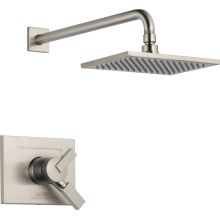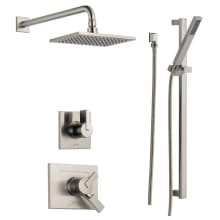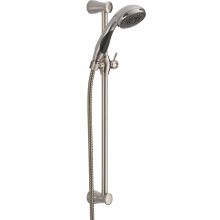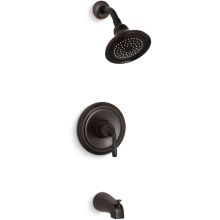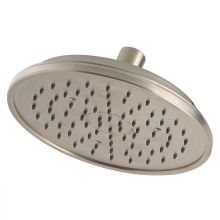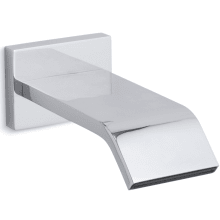How to Detect a Shower Leak Behind the Wall
Learn how to recognize the danger signs and deal with those damaging drips.
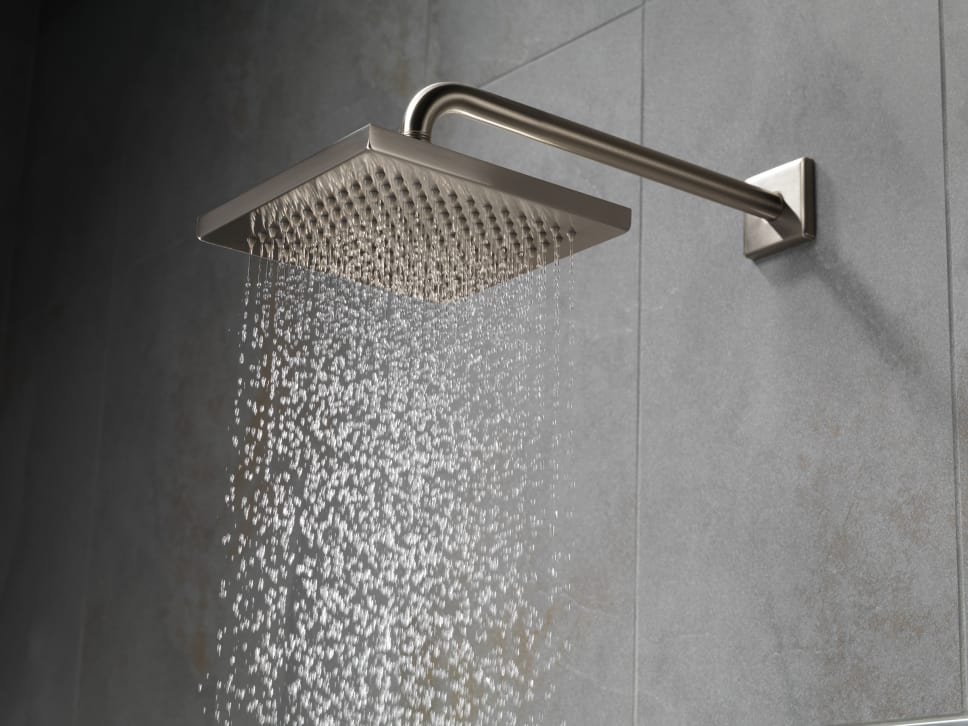
Hidden water leaks are a hazard in any bathroom. They lead to mold and mildew buildup behind walls, which can compromise the structural integrity of walls or flooring, as well as provide a warm, moist environment for household pests to flourish. Knowing how to find and repair a hidden leak is crucial to stopping the damage before it becomes a disaster.
The Signs of a Hidden Shower Leak
The first sign you may have a hidden leak is a slightly damp, musty odor in your bathroom that doesn’t seem to go away no matter how much you bleach, scrub, or sanitize the room. If the leak is serious enough or is a long-standing issue, you may notice damp spots on your walls, floors, or ceiling. Even if there is a visible damp patch, that may not be the origin of the leak itself. Water travels easily and moves along the path of least resistance. A damp spot on your floor can very well be a sign of a hidden leak behind your walls.
The Dangers of a Hidden Shower Leak
A hidden wall leak behind your shower can cause any number of problems. One of the biggest health concerns related to hidden leaks is the buildup of mold and mildew. Drywall impacted by a water leak can begin to grow mold and mildew as soon as 24 hours after exposure. Drywall absorbs the moisture and feeds it with cellulose from its paper backing. Even if there are no signs of mold or mildew on the exterior of your walls, a leaky shower is almost guaranteed to have buildup. As you find and repair leaks, you may find you’ll have to remove and replace any drywall touched by the mold, and treat the area with fungicides to slow and eliminate mold spores and growth.
As if the thought of breathing in potentially toxic mold wasn’t enough, the moisture from a wall leak can begin the process of wood rot in studs, struts, and other support fixtures behind your wall. Wood rot invites pests like termites and roaches to further undermine the strength of the structure. If you’re able to catch and repair a hidden wall leak sooner rather than later, you might avoid extensive and costly structural damage to your home.
Eliminating Other Causes
It’s important to eliminate other causes before assuming you have a leak behind the wall. To begin your investigation, let your shower and bathroom dry thoroughly. If you have shower doors, close them and spray them down from the inside with a water bottle, focusing on the seams and corners. If there is dampness on the floor outside the shower, your problem may simply be a lack of sound caulking. Similarly, you might also fill your tub to its drain threshold to see if there’s any leakage or spillover.
When observing a dried-out shower and bathroom, take note of faucet or showerhead leaks and their telltale dripping noises. This is a simple fix: a replacement of the showerhead or faucet can solve things easily and quickly, but make sure that you don’t stop looking there.
If your shower has tiled walls, you may be looking for a grout failure. Starting with a dry shower, splash water on one area of one wall at a time, working your way around the shower. Look for missing grout along the tiles as you go, as it’s easy to spot when wet. If you happen to locate a spot with missing grout, simply re-apply some fresh grout in its spot. Let that dry and then retest the area to be certain.
If none of these solve your problem and you still have a wet spot or dampness in your bathroom, you’ll have to investigate further to find the cause of your hidden leak.
Finding the Source of a Hidden Wall Leak
A visible damp patch on your wall is a good starting point. Probe the wet spot and find the center. Use a small finishing nail to find any studs or piping: if the nail encounters any resistance behind the wall, stop and do not try to drive it further in. Working between (and not on) the studs of the affected wall, saw a small inspection hole around the wet spot and locate the plumbing. If you’re lucky, the leak will be visible. If not, you’ll have to follow the plumbing until you find the source of the leak, which means testing along the walls and sawing small holes as you go.
Examine the plumbing pipes and fixtures, looking for streaks of corrosion on copper piping, and holes or deteriorated sealant on PVC piping and connections. If you have PVC piping and the leak is coming from a broken connection, shut off the water to the area and remove the faulty piece of piping, then replace it with a new pipe fitting to fix your leak.
Copper piping requires more extensive repair and renovation. A leaky pipe could require cutting and welding a new connection entirely, or replacing the entire piece of pipe. If you aren’t comfortable doing so, you’ll have to enlist the help of a professional plumbing contractor to do so for you. As with all plumbing projects and repairs, these are complicated, time-intensive projects that may take specific skills and knowledge: don’t be afraid to enlist the help of a professional.
While patches are available for both PVC and copper piping, they’re a temporary fix. Patches should only be used if you don’t feel comfortable replacing the piping yourself but do not have the money to call a professional plumber immediately. Patches are not a substitute for proper repair or replacement of faulty pipes causing a leak behind your shower walls.
Finding and Repairing a Hidden Shower Leak
Finding a hidden leak behind your shower wall starts with noticing there’s a problem and then tracing it back to the source. It won’t always be an obvious connection and will take some investigation and work; if the leak isn’t severe or long-standing, you might not even know there’s something dripping. If you think there may be a leak, it’s always worth a thorough look.
The key points to remember:
- The main signs to look for are dampness on walls, on the floor, or the ceiling, and a musty odor in the bathroom, even when not in use.
- Eliminate other causes and easy fixes first, and then, once you’re certain it’s behind the walls, do the work to pinpoint the cause and source of the shower leak.
- Keep in mind that repairing the piping may seem easy enough, but remedying mold, mildew and damaged structural components or drywall may take time and some research.
- If you aren’t willing to call in a pro, make use of pipe patching materials to stop the leak until you’re able to properly fix it and the damage it’s done.
With these tips as a handy reference, you should be able to sleuth out the hidden shower leaks lurking in your home bathroom. Every home project is different; depending on the severity of the problem when you catch it, it may be something you can handle yourself, or it may be best left up to the professionals. Knowing how to find and approach the problem is the first step of the process in determining what works best for your home.

